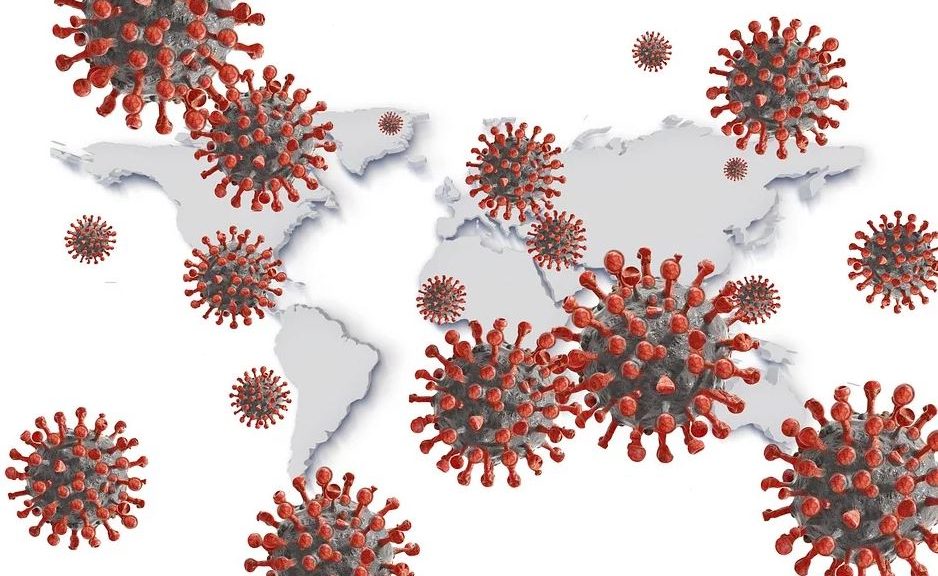Human beings are 50% composed of microorganisms that help them to function. This discovery will allow us, in the years to come, to better understand how the skin protects us, evolves and ages.
Véronique Delvigne, Lancôme.
Theme of the month: Cosmetics and longevity
The history of cosmetics
It is above all the story of how we look at ourselves and how we look at others. From prehistoric times to the present day, this gaze has changed, dictating fashions and enacting rules that in turn seem obsolete or, on the contrary, the height of modernity.
It all began about 12,000 years ago when the ancient Egyptians discovered the healing powers of scented oils. From then on, their cosmetic industry developed to the point where it became an important part of their religion. The gods were honored by the general population with a wide use of cosmetics. Almost everyone used oils, eyeliners and similar products to improve appearance. Even though some of their ingredients were toxic, the appeal of cosmetics did not diminish.
Cosmetics have also found their way out of Egypt. They achieved great popularity in Greece and Rome. In the “Eternal City” there was even a time when women were not considered beautiful if they did not wear cosmetics. This led to price inflation. Rich women invested fortunes in expensive cosmetics from India and the Middle East. However, at some point, many began to regard them as extravagant and unnecessary. To combat the cosmetics epidemic, the Roman Senate enacted the “LexOppia” law of 189 B.C. which banned public displays of extravagant cosmetics and women’s clothing in all cities of the Roman Republic.
The Dark Ages in Europe were the time when cosmetics almost disappeared from public practice. Due to the tradition of prostitutes using excessive amounts of cosmetics to hide their age and exaggerate their beauty, cosmetics were totally abandoned by the majority of the European population for centuries. Kings and Queens made public statements that wearing cosmetics was not decent, Church leaders spread the belief that cosmetics were used only by pagans and Satan worshippers, and for a very long time only actors were allowed to use them, but only during their performances.
Cosmetics in search of science
Cosmetics and care products occupy an important place in our daily lives. For example, every day, the Belgian consumer uses almost 18 grams of care products.
In the past, noble dermatology ignored trivial cosmetics. But today, cosmetics are becoming medicalized, while dermatology benefits from the innovations of the beauty industry. Witness to this rapprochement: the rise of the term cosmeceutical promoted by manufacturers as a medical endorsement for their products.
The shift from cosmetics to research began in the early 1980s, when biologists broke into a field that had previously been in the hands of chemists and pharmacists, taking a different look at the skin: no longer a simple barrier separating the body from the outside world, but a true organ with complex immunological, sensory and physiological properties.
A series of innovations punctuated this shift toward research: the introduction in 1984 of vitamin A acid, now the favorite molecule for anti-aging products, the first skin cultures in 1985 and, the following year, Dior’s launch of liposomes, the lipid vesicles that transport the active ingredient to the area to be treated. This cascade of innovations was accompanied by a surge in research and development spending. L’Oréal, the world leader in cosmetics, has tripled its research budget in ten years to reach 985 million euros in 2019. On average, the cosmetics sector spends 4% of its revenues on research and development. However, this remains negligible compared to advertising spending.
Update on the latest anti-aging advances…
Biological decoding
Each year brings its share of innovations in terms of skin aging. But researchers are currently making such discoveries that anti-aging cosmetics could be completely overturned: “On the one hand, we have the sequencing of DNA, of all our cells and our microbiome, which gives us crucial new information about how the skin works. And on the other hand, bioinformatics, which today enables us to compile (via supercomputers) billions of biological data from studies carried out all over the world,” summarizes Véronique Delvigne, Director of Scientific Communications at Lancôme.
Microbiome 2.0
Evolving knowledge about the microbiome gives us a totally different reading of how we function and how the skin in particular functions. We know today that we are 50% composed of microorganisms (bacteria, yeasts, viruses) and that this microbiota protects us from aggression, synthesizes antioxidants, strengthens our immune system and helps healing. It also communicates with all the cells of our body, and therefore of our skin, to dictate their conduct. At L’Oréal, 9 research centers and 50 researchers are already working on the subject.
Microscopic control
The microbiota is said to effectively be able to control our internal imbalances, areas of inflammation, skin breaches or free radical attacks. The idea is to learn how to control the microorganisms so that they can repair damaged or irritated areas. The Seed company claims that its probiotics would be “trained” to graft themselves onto the intestines and act on the inflamed areas instead of crossing them unnecessarily.
Aging Prediction Kit
In the United States, the widespread use of DNA decoding kits now makes it possible to treat dermatological aging as a classic health problem. The state of the skin is deciphered not only from its genetic capital, but also from the state of its microbiota of the moment, its morale and its lifestyle. The results give a 360° vision of each person, compressed in the form of a data bank. Passed through the filters of artificial intelligence, this information makes it possible to predict risk areas, inflammation levels or the effectiveness of different families of probiotics. At home, some kits already allow us to discover our predispositions to certain allergies, diseases or the way we are going to age. The Lifenome tests, for example, are supposed to predict a natural aptitude for running or a tendency to skin ptosis with, at the end of the day, ultra-targeted recommendations for fitness, nutrition or skin care. EverlyWell kits focus on food allergies, DHA levels and body metabolism.
Anti-aging cream based on senolytics
Senescent cells interfere with tissue function and health when they linger and multiply, as they do with age. They contribute to the chronic inflammation associated with senescence. In the skin, senescent cells are most likely responsible for a significant fraction of skin aging, which is perceived to be more problematic from the age of 50 onwards.
Therefore, OneSkin offers a senolytic treatment. And this is happening years before the FDA approves one of the programs aimed at destroying senescent cells throughout the body.
Collagen, the protein that keeps you young
Collagen is a protein that gives resistance and elasticity to skin, bones, muscles, cartilage and ligaments.
It is today the object of intense marketing: beauty creams, drinks, powders, food supplements. Of course! Everyone would like to be filled with collagen again like children with their soft cheeks, peachy skin and supple joints.
Unfortunately, our collagen production decreases with age. In addition, collagen proteins present in our body are degraded by sunlight, pollution, free radicals and junk food.
Collagen, in particular, is vulnerable to excess sugar. It is also damaged a lot by AGEs (Advanced glycation end-products). AGEs are toxic molecules contained in the “crispy bit” of meats and fried foods, which we consume too much of.
Because of the non-renewal of collagen, older people experience a kind of general decay of the body. This is problematic at all levels: osteoporosis, osteoarthritis, aging of tissues (wrinkles).
One of the best known (and most sought-after) functions of collagen concerns wrinkles. A study published in 2014 on women between 35 and 55 years old showed an increase in skin elasticity in 4 weeks, under the effect of a supplement of collagen hydrolysate.
The “aging well”, an evolution of anti-aging before going further?
Anti-aging is the fundamental trend in the sector, which can be found in all brands in the form of day/night creams, serums, masks, sprays, make-up, etc. Consumers love skin care products that reduce wrinkles, even out and brighten their complexion, reduce pigmentation spots, in short: to limit or even repair the signs of aging.
However, cosmetic products are still dedicated to daily surface use that can improve the appearance of the skin for a limited time. They are not drugs or invasive surgical procedures that completely reverse the effects of age. Anti-aging claims on trademarks are increasingly controlled with countries, such as the United States, Canada and European countries, regulating the appearance of such claims on packaging and limiting the scope of the terms used.
The current trend is towards self-acceptance, respect for one’s body and accompanying it in its daily well-being. In this context, articles are multiplying on the notion of “aging well”, which adds a nuance to the classic “anti-aging”.
For thousands of years, women and men have sought to stave off the irreparable outrage of the passing years, for their physical appearance as well as for their health. Cosmetics have only a limited role in this regard. To go further, only knowledge, particularly in terms of genetics, massive data analysis, and understanding of all the organisms that make up our bodies, can contribute to the radical advances needed for a much longer healthy lifespan.
The good news of the month :
Massive data in the field of health is increasingly interconnected. This is a positive step forward in the fight against age-related diseases. It is a matter of better understanding in order to fight better, for example against Covid 19, this disease that unfortunately continues its deadly growth in recent weeks.
Overall positive developments are particularly noticeable:
In France, the Health Data Hub enables the pooling of a large amount of health data. Some concrete projects are progressing. But more public confidence is needed. Emmanuel Bacry, the Hub’s Chief Scientific Officer, said on December 9, 2020: << I think it’s extremely important to explain to citizens what it means to share data, to really explain to them what the real risk of data sharing would be, but also its benefits, and what we can expect from it. (…) There can be positive fantasies. Thanks to artificial intelligence, I’m going to live to be 200 years old. There are negative fantasies. My data will be taken by insurance companies and I will be evaluated and graded. »
In Finland, for several months now, all health data has been linked via a public body called FinData. It is worth noting the broad consensus that exists when the guarantees of public authority, scientific interest and lack of commercial interest are integrated into the project. The system provides that citizens who wish to take part may “opt out”. But as of November 10, 2020, less than 200 people out of about 6 million Finnish citizens have wished to have their data not accessible – according to Johanna Seppänen, director of the institution.
At the European level, progress on the “European Data Space” is fast. A text relating to new rules for data sharing within the Union is being drawn up, with a text on health projected for early 2021. Perhaps the most positive step forward is more in terms of ideas than in technical terms. The European Union is proposing a new concept, that of an “altruistic database” managed by non-profit organizations.
In the United States, the “All of Us” project aims to pool the extensive health data of a million volunteers. Results linked to the biological samples of 270,000 people already actively involved have recently become available to researchers and volunteers themselves.
Find out more:
- See in particular : heales.org, sens.org, longevityalliance.org and longecity.org.
- Source of the image.







